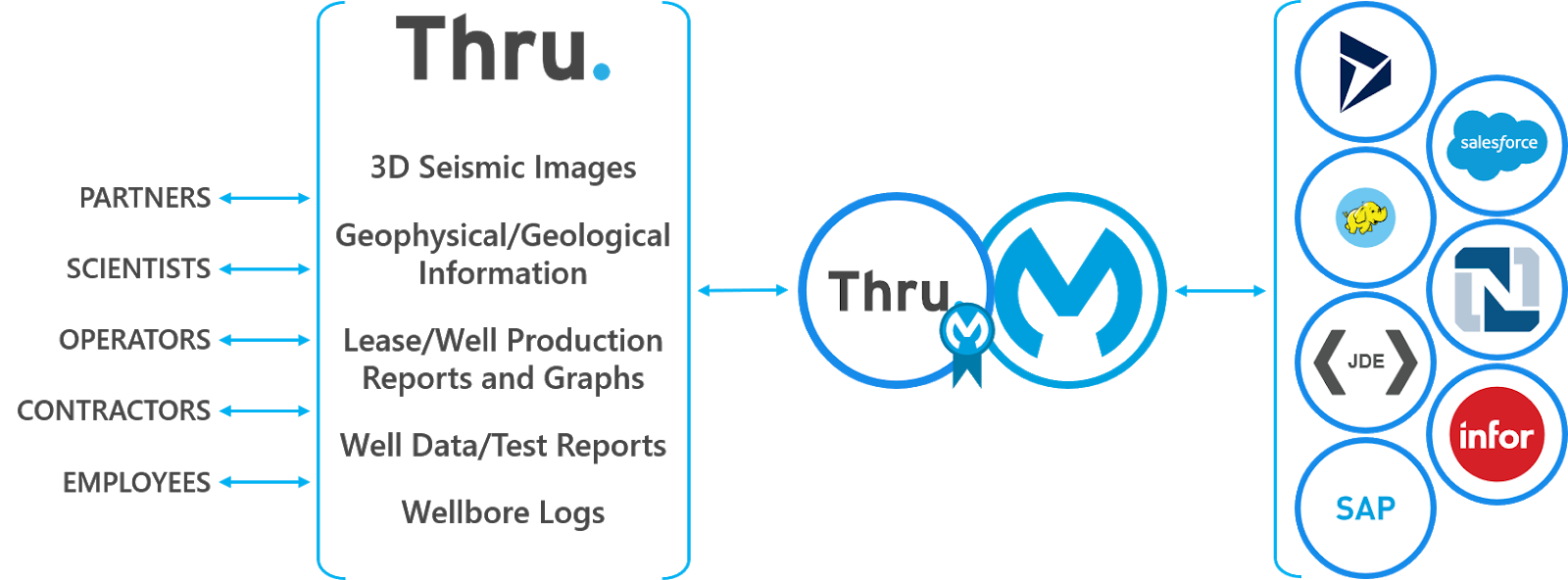Digital technologies are massively disrupting the oil and gas industry, resulting in reduced costs and an increase in productivity. Oil and gas companies are considering technologies such as AI, IoT, analytics, and process automation, while continuing to recognize the need for an ecosystem of third-party suppliers. Even vertically integrated oil giants like ExxonMobil, Royal Dutch Shell, ConocoPhillips, or BP are relying on third-party suppliers, or oilfield services (OFS), to provide equipment and expertise to fill gaps in its supply chain.
Since these OFS companies perform business-critical functions it can have a devastating impact on the business if disrupted or delayed by a mistake or an inefficiency. Disruption is often caused by poor communication and collaboration, which can slow the progress of projects and have a severe impact on operational efficiency. To mitigate these risks, companies need to digitally transform to increase automation of these processes.
“Data generation, sharing, analysis, and storage are important enablers of digital transformation – for example, in adopting the Industrial Internet of Things, or collaborating within the ecosystem. Applying integrated digital platforms enhances collaboration among ecosystem participants, helping to fast-track innovation, reduce costs, and provide operational transparency,” according to an Accenture white paper1. “Digital transformation in the oil and gas industry could unlock approximately $1.6 trillion of value for the industry, its customers, and wider society.”
Connecting a “digital oilfield” in the cloud with APIs
A global oil exploration and production company was using multiple legacy, on-premises business applications and file transfer servers that made it difficult to manage, track, integrate, and scale digital workflows with trading partners and internal lines of business. It needed to modernize and optimize its core business applications and file transfer infrastructure to improve how it gathers, processes, transfers and analyzes large volumes of data.
To move away from the high overhead costs of on-premises systems and increase its operational efficiency and agility, this global oil and gas development and exploration company implemented a “cloud first,” data-centric strategy. Its ultimate goal was to build a “digital oilfield” to optimize its use of data in key decisions across the enterprise.
The first step in this strategy was to migrate its core applications, such as ERP, big data reservoir, collaboration, and analytics applications to the cloud. It also included adding IoT sensors and predictive analytics systems to its global equipment and wells to collect real-time data for its business intelligence teams to monitor and report critical information, such as well level economics, geological, and geophysical exploration updates, drilling, fracking, and production outputs.
The next step was to find a standardized solution for transferring, integrating, and processing its large datasets across its new cloud applications and remaining on-premises systems. The company decided to use APIs as its building blocks to connect its oil and gas production and exploration processes across the cloud and on-premises.
After analyzing various integration and file transfer technologies, the company selected MuleSoft’s Anypoint Platform as its enterprise-wide integration platform for building API integrations and the Thru Platform for managing B2B file exchanges. A primary reason for selecting Thru was its robust MFT file transfer capabilities and out-of-the-box integration with Anypoint Platform via the Thru MFT Connector for MuleSoft.
The combined power of MuleSoft and Thru increased the speed of integrations and file transfers by decentralizing IT and allowing global departments to quickly build innovative digital solutions via reusable APIs.
Migrating B2B file transfers to the cloud
Prior to Thru and MuleSoft, the company faced complex integration challenges in transferring and integrating large datasets across its suite of applications, devices, and internal and external entities.
The outdated FTP systems were insufficient due to poor security, no tracking, limited monitoring, lack of alerts, and restricted ability to connect with third party applications / devices. Its IT department spent long hours scrutinizing file transfer logs to diagnose failed file transfers and writing cumbersome scripts to onboard partners and exchange data between business applications.
By consolidating and automating file transfers with Thru, this company improved file transfer reliability, and significantly reduced the need to manage and troubleshoot point-to-point file transfer integrations. Streamlining file exchange operations enabled its IT department to:
- Enhance business agility with instant scale, consumerized usability, and, because they pay only for what they consume, improved ROI.
- Enrich insight and visibility with a consolidated view of overall file transfer status, monitoring, and alerts.
- Increase responsiveness to business needs by eliminating time-consuming scripting and maintenance of point-to-point file transfers.
- Improve reliability of file transfers by responding in real-time to errors that cause failures.
- Decrease time and expenses associated with on-premises file transfer software.
Modernizing file transfer with Thru and MuleSoft
The company needed to migrate from its multiple FTP servers to a single cloud-based solution to align its file transfer solution with its new cloud strategy. This made it so it could consolidate file exchange management and integrate seamlessly with integration workflows within Anypoint Platform.
Thru enabled the company to achieve its MFT modernization goal by replacing its outdated FTP technology with the Thru platform and Thru MFT Connector for MuleSoft. Global departments can now create scheduled file transfer workflows in Thru for various processes, such as exchanging 3D seismic images with partners or pulling oil well data reports from employee desktops and integrate files into MuleSoft using the Thru MFT Connector. As you can see in the diagram below, files such as geophysical information and oil well production reports flow between Thru file transfer workflows and Mule flows and connect with various applications, such as Hadoop, Salesforce, and SAP.

This oil and gas leader is now reaping the benefits of digital transformation with the help of the natively integrated MuleSoft and Thru managed file transfer solution:
- 10x reduction in file transfer system operating expenses.
- 2.5x accelerated delivery of its business-critical data.
Additionally, it successfully migrated away from on-premises infrastructure to the cloud, increasing the company’s agility to create file transfer workflows and integrations significantly faster than with its previous on-premises FTP servers.
To learn more about how Thru and MuleSoft modernize file transfers processes, download the Thru MFT Connector for MuleSoft datasheet.
1White Paper: Digital Transformation Initiative Oil and Gas Industry, January 2017 – World Economic Forum In collaboration with Accenture.









